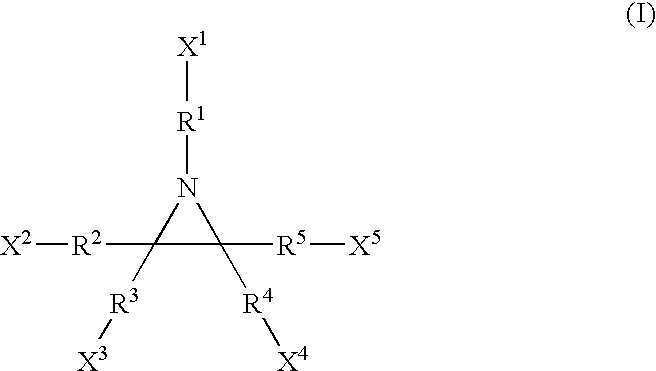Modified Polymer, Rubber Composition, and Tire
a technology of modified polymers and rubber compositions, applied in the direction of pneumatic tyre reinforcements, tire parts, vehicle components, etc., can solve the problems of not providing sufficient effects particularly for blends, and achieve excellent interaction, excellent low heat generation properties, and excellent abrasion resistance.
- Summary
- Abstract
- Description
- Claims
- Application Information
AI Technical Summary
Benefits of technology
Problems solved by technology
Method used
Image
Examples
production example 1 (
Polymer A)
[0115]In a 800-ml pressure-resistant glass vessel dried and purged with nitrogen were charged a cyclohexane solution (16 mass %) of 1,3-butadiene and a cycloheaxne solution (21 mass %) of styrene such that 50 g of 1,3-butadiene and 15 g of styrene were present. To this were added 0.29 mmol of 2,2-ditetrahydrofurylpropane and then 0.57 mmol of n-butyllithium (BuLi). Then, the resultant mixture was allowed to polymerize at 50° C. for 1.5 hours. The conversion rate at this time was approximately 100%.
[0116]After that, 0.5 ml of 5 mass % isopropanol solution of 2,6-di-t-butyl-p-cresol (BHT) was added to the polymerization reaction system to terminate the polymerization reaction, and the product was dried according to a conventional method to obtain Polymer A. The analytical values of the obtained polymer are shown in Table 1.
production example 2 (
Polymer B)
[0117]In a 800-ml pressure-resistant glass vessel dried and purged with nitrogen were charged a cyclohexane solution (16 mass %) of 1,3-butadiene and a cyclohexane solution (21 mass %) of styrene such that 50 g of 1,3-butadiene and 15 g of styrene were present. To this were added 0.36 mmol of 2,2-ditetrahydrofurylpropane and then 0.72 mmol of n-butyllithium (BuLi). Then, the resultant mixture was allowed to polymerize at 50° C. for 1.5 hours. The conversion rate at this time was approximately 100%.
[0118]Then, to the polymerization reaction system was added 0.18 mmol of tin tetrachloride (TTC) as a modifier, and further, modification reaction was performed at 500° C. for 30 minutes. After that, 0.5 ml of 5 mass % isopropanol solution of 2,6-di-t-butyl-p-cresol (BHT) was added to the polymerization reaction system to terminate the polymerization reaction, and the product was dried according to a conventional method to obtain Polymer B. The analytical values of the obtained p...
production example 3 (
Polymer C)
[0119]Polymer C was obtained in the same manner as in Production Example 2 except that 0.72 mmol of 1-butyrylaziridine was used as a modifier instead of tin tetrachloride. The analytical values of the obtained polymer are shown in Table 1.
PUM
| Property | Measurement | Unit |
|---|---|---|
| temperature | aaaaa | aaaaa |
| temperature | aaaaa | aaaaa |
| temperature | aaaaa | aaaaa |
Abstract
Description
Claims
Application Information
 Login to View More
Login to View More - R&D
- Intellectual Property
- Life Sciences
- Materials
- Tech Scout
- Unparalleled Data Quality
- Higher Quality Content
- 60% Fewer Hallucinations
Browse by: Latest US Patents, China's latest patents, Technical Efficacy Thesaurus, Application Domain, Technology Topic, Popular Technical Reports.
© 2025 PatSnap. All rights reserved.Legal|Privacy policy|Modern Slavery Act Transparency Statement|Sitemap|About US| Contact US: help@patsnap.com



